Belly button piercings are a popular form of body modification, but one of the most common questions among those considering or undergoing this procedure is: How long does it take for a belly button piercing to heal? While the average healing time is typically 6 to 12 months, various factors can influence this timeline. Factors such as proper aftercare, individual healing capabilities, and the type of jewelry used can all impact the healing process. Understanding these factors is essential for ensuring a smooth and successful healing journey. We will explore these details in-depth at the end of this article to provide comprehensive insights into the healing process of belly button piercings.
What is a Belly Button Piercing?
A belly button piercing, also known as a navel piercing, is a type of body modification where a piercing is made through the skin around the navel. It can be located on the upper fold of skin but may also be placed underneath or around the edges of the navel. The most common jewelry used for this piercing is a barbell or a captive bead ring.
Different Types of Belly Button Piercings
There are several types of belly button piercings, each with its unique placement and style. Here are some of the different types:
• Upper Belly Button Piercing: This is the most common type and is placed at the top of the navel. It’s suitable for navels with a prominent upper fold.
• Lower Belly Button Piercing (Inverse Navel Piercing): Located at the bottom of the navel, this type is the opposite of the standard upper piercing.
• Double Belly Button Piercings: This involves two piercings, one above and one below the navel, or side by side.
• Horizontal Belly Button Piercings: These piercings go through the skin at the sides of the navel, either left or right.
• Belly Button Dermal Piercings: These are single-point piercings that can be placed anywhere around the navel area.
Each type has its own healing times and jewelry options, and the suitability can depend on the individual’s anatomy. It’s important to consult with a professional piercer to determine which type is best for you.
Why belly button piercing?
People choose to get belly button piercings for various reasons, including:
• Fashion and Aesthetics: Many find belly button piercings to be a stylish and attractive addition to their body art.
• Personal Expression:It’s a way to express individuality and personal style.
• Cultural Significance: In some cultures, belly button piercings have historical or traditional significance.
• Ancient Egypt: In ancient Egypt, navel piercings were prevalent and often associated with royalty and the divine.
• India: In South Asia, particularly in India, navel piercings have a long history and are deeply rooted in Hindu traditions, where they are associated with fertility and marital status.
• Western Cultures: While the cultural significance has evolved over time, in the West, navel piercings were once a symbol of rebellion and are now a popular form of self-expression and fashion.
• Celebrity Influence: The popularity of belly button piercings surged during the 1990s and early 2000s, partly due to celebrities sporting them.
• Milestones: Some people get piercings to mark important events or transitions in their lives.
Ultimately, the decision to get a belly button piercing is a personal one and can be influenced by a combination of factors, including trends, personal preferences, and cultural practices.
What are the steps of belly button piercing?
The process of getting a belly button piercing generally involves six following steps:
1. Sanitization: The piercer will sanitize the environment and equipment to ensure a sterile setting.
2. Skin Cleaning: The area around the navel will be cleaned with an antiseptic solution to prevent infection.
3. Marking: The piercer will mark the entry and exit points for the piercing on the skin around the navel.
4. Piercing: Using a sterilized, hollow needle, the piercer will create the piercing. This is usually done with the aid of a clamp to hold the skin in place.
5. Jewelry Insertion: Immediately after the piercing, the jewelry, typically a barbell or a ring, will be inserted through the new opening.
6. Cleaning and Aftercare: The area will be cleaned again, and the piercer will provide aftercare instructions to help with the healing process.
It’s important to follow the aftercare instructions carefully to ensure proper healing and to minimize the risk of infection.
Precaution for belly button piercing
Taking precautions before and after getting a belly button piercing is crucial for a safe healing process and to minimize the risk of complications. Here are some key precautions to follow:
1. Choose a Reputable Piercer: Ensure the piercer is professionally trained, works in a clean and licensed studio, and follows strict sterilization protocols.
2. Quality Jewelry: Opt for high-quality jewelry made of materials like titanium, surgical steel, or 14- or 18-karat gold to reduce the risk of allergic reactions.
3. Clean Hands: Always wash your hands with antibacterial soap before touching the piercing to prevent the transfer of bacteria
4. Regular Cleaning: Clean the piercing twice a day with warm water and soap, and use a saline solution as recommended by the piercer.
5. Avoid Baths: Stick to showers instead of baths to keep the piercing clean and free from potential contaminants.
6. Dry Properly: After cleaning, gently pat the area dry with a disposable paper towel instead of a cloth towel to avoid bacteria transfer.
7. Loose Clothing: Wear clean, loose-fitting clothing to prevent irritation and allow the piercing to breathe.
8. Avoid Water Bodies: Stay out of lakes, pools, and hot tubs for at least 6 months after getting pierced to prevent exposure to bacteria.
9. No Jewelry Changes: Don’t change the jewelry until the piercing has completely healed, which can take between 6 to 12 months.
10. Monitor Healing: Keep an eye on the piercing for signs of infection or unusual pain and consult a healthcare professional if necessary.
Following these precautions will help ensure that your belly button piercing heals properly and remains healthy.
Different types of treatment for belly button piercing?
When it comes to treating issues related to belly button piercings, there are several approaches depending on the specific problem. Here are some common treatments:
For Infections:
• Warm Compresses: Applying a warm saline compress can reduce swelling and discomfort.
• Antibiotic Ointment: If prescribed by a doctor, an antibiotic ointment can be applied to combat bacterial infections.
• Oral Antibiotics: In more severe cases, a doctor may prescribe oral antibiotics to treat the infection.
For Irritation:
• Avoid Irritants: Keep the area free from potential irritants such as tight clothing, body sprays, or lotions.
• Minimize Movement: Try to avoid excessive movement or playing with the jewelry to allow the area to heal.
• For Allergic Reactions:
• Hypoallergenic Jewelry: Switching to jewelry made of materials less likely to cause allergic reactions, such as surgical steel, titanium, or nickel-free gold, can help.
For Stretched Piercings:
• Surgical Repair: If the piercing hole has stretched significantly, surgical repair might be the only definitive treatment.
For General Aftercare:
• Saline Solution: Clean the piercing with a saline solution twice a day to promote healing and prevent infection.
• Mild Soap: Occasionally, a mild, fragrance-free soap can be used for cleaning.
It’s important to consult with a healthcare professional or a qualified piercer for personalized advice and treatment, especially if you suspect an infection or other complications. Proper aftercare is crucial for the healing process and to prevent issues with belly button piercings.
If anything goes wrong, what will happen to a belly button piercing?
If complications arise with a belly button piercing, various outcomes may occur, including:
- Infection: Redness, swelling, pain, and discharge from the piercing site may indicate an infection. Prompt treatment with antibiotics may be necessary to resolve the infection.
- Migration or Rejection: The body may perceive the piercing as a foreign object and attempt to push it out, resulting in migration or rejection. This can cause the piercing to move or ultimately be expelled from the body.
- Hypertrophic Scarring: Excessive scarring, known as hypertrophic scarring, may occur around the piercing site, resulting in raised, red, and itchy tissue. Treatment options may include corticosteroid injections or silicone gel sheets to reduce scarring.
- Keloid Formation: Keloids are raised, overgrown scars that extend beyond the boundaries of the piercing site. Keloids may require medical intervention, such as corticosteroid injections or surgical removal, to manage.
- Allergic Reactions: Some individuals may experience allergic reactions to the metal in the jewelry, resulting in itching, redness, or irritation around the piercing site. Switching to hypoallergenic jewelry may alleviate symptoms.
- Embedding: In rare cases, the jewelry may become embedded in the surrounding tissue, requiring medical attention to remove it safely.
- Delayed Healing: Factors such as poor aftercare, trauma to the piercing site, or underlying health conditions may delay the healing process, prolonging discomfort and increasing the risk of complications.
It’s essential to monitor the piercing closely for any signs of trouble and seek prompt medical attention if complications arise. Consulting with a professional piercer or healthcare provider can help address issues and ensure proper care for the piercing.
Aftercare for Belly Button Piercing
Aftercare for a belly button piercing typically includes the following steps:
- Cleanliness: Wash your hands thoroughly with antibacterial soap before touching the piercing site.
- Saline Soaks: Soak the piercing in a saline solution (a mixture of non-iodized sea salt and warm water) for 5-10 minutes, 2-3 times a day.
- Gentle Cleaning: Use a mild, fragrance-free soap to clean around the piercing site, rinsing thoroughly afterward.
- Pat Dry: Gently pat the piercing dry with a clean paper towel or tissue. Avoid using towels or cloths that may harbor bacteria.
- Avoiding Irritants: Avoid swimming in pools, hot tubs, or natural bodies of water until the piercing is fully healed to prevent bacterial contamination.
- Avoiding Tight Clothing: Refrain from wearing tight clothing that may rub against or irritate the piercing site.
- Jewelry Care: Ensure that the jewelry is made of high-quality, hypoallergenic materials and avoid changing or removing it prematurely.
- Avoiding Trauma: Be cautious during physical activities to avoid trauma to the piercing area, and refrain from sleeping on your stomach until the piercing is fully healed.
- Healthy Lifestyle: Maintain a healthy lifestyle by eating a balanced diet, staying hydrated, and avoiding smoking and excessive alcohol consumption, as these can impede the healing process.
- Follow-up Care: Schedule follow-up appointments with your piercer if necessary to monitor the healing process and address any concerns or complications.
It’s essential to follow these aftercare instructions diligently to promote proper healing and prevent complications. If you experience signs of infection or other issues, consult a healthcare professional or your piercer for guidance.
How Long Does a Belly Button Piercing Take to Heal?
The healing time for a belly button piercing can indeed vary depending on several factors. Here are different cases and their typical healing times:
• Standard Healing Time: For most people, a belly button piercing takes about 6 to 12 months to heal completely.
• Faster Healing: Some individuals may experience faster healing, with piercings appearing to be fully healed within 4 to 6 weeks; however, it’s important to note that the piercing still needs 3 to 6 months—and sometimes up to a year—to heal completely, inside and out.
• Delayed Healing: In some cases, healing can be delayed due to factors such as improper aftercare, frequent irritation from clothing, or the body’s slower healing response. This can extend the healing time beyond the typical 12-month period.
• Complications: If complications arise, such as an infection or allergic reaction, the healing process can be significantly prolonged. Treatment for these issues may also affect the overall healing time.
• Individual Differences: Each person’s body is unique, and factors like overall health, diet, stress levels, and genetics can influence the healing time. Some may heal within the shorter end of the spectrum, while others may take longer.
It’s crucial to follow the aftercare instructions provided by your piercer and to consult with them or a healthcare professional if you have concerns about the healing process of your belly button piercing.
FAQS
Here are some frequently asked questions (FAQs) about how long does a belly button piercing take to heal:
Belly button piercings are located in an area with limited blood flow, which can slow down the healing process. Additionally, the piercing may be subject to friction from clothing and movement, further prolonging healing time.
Factors such as individual health, aftercare practices, lifestyle, and the skill of the piercer can all influence how quickly a belly button piercing heals.
Signs of proper healing include minimal redness, swelling, and discharge, as well as reduced tenderness around the piercing site. The piercing should gradually become less sensitive over time.
While proper aftercare is essential for promoting healing, there is no guaranteed way to speed up the process. However, maintaining good overall health, following aftercare instructions diligently, and avoiding activities that may irritate the piercing can help support the healing process.
It’s generally recommended to wait until the piercing is fully healed before changing the jewelry, which can take up to a year. Changing the jewelry prematurely can increase the risk of complications and slow down healing.
If you suspect that your piercing is infected, it’s important to seek medical attention promptly. Your healthcare provider can prescribe antibiotics or provide other treatments to help clear the infection and prevent complications.
It’s generally recommended to avoid swimming in pools, hot tubs, oceans, and lakes until the piercing is fully healed to reduce the risk of infection. Chlorine and bacteria in water can irritate the piercing and impede the healing process.
While some scarring is normal after a piercing, proper aftercare practices and avoiding trauma to the piercing site can help minimize the risk of excessive scarring. Individual healing factors and skin type may also influence the extent of scarring.
Age requirements for belly button piercings may vary depending on local regulations and the policies of individual piercing studios. In many places, minors may need parental consent to get a piercing.
Pain below the belly button can stem from various sources, including gastrointestinal issues like gastritis, gastroenteritis, or constipation, as well as urinary tract infections (UTIs), reproductive system disorders such as ovarian cysts or endometriosis, and musculoskeletal problems like strains or hernias. Appendicitis, bladder or kidney stones, and digestive disorders like diverticulitis or inflammatory bowel disease (IBD) can also lead to lower abdominal pain. Additionally, pelvic floor dysfunction or psychological factors such as stress may contribute to discomfort in this area. Accurate diagnosis by a healthcare professional is crucial for appropriate treatment, particularly if the pain is persistent or severe.
Conclusion:
The healing time for a belly button piercing can vary from person to person but typically ranges from 6 months to 1 year for full healing. Factors such as individual health, aftercare practices, lifestyle, and the skill of the piercer can all influence how quickly the piercing heals. While proper aftercare is essential for promoting healing, there is no guaranteed way to speed up the process. It’s crucial to be patient and diligent with aftercare practices, avoiding activities that may irritate the piercing and seeking medical attention if signs of infection or complications arise. By following these guidelines and consulting with a professional piercer or healthcare provider as needed, individuals can ensure a smooth and successful healing process for their belly button piercing.


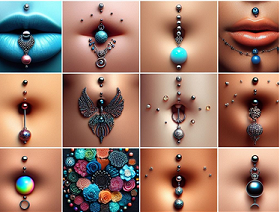
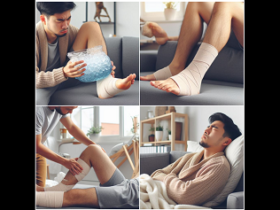


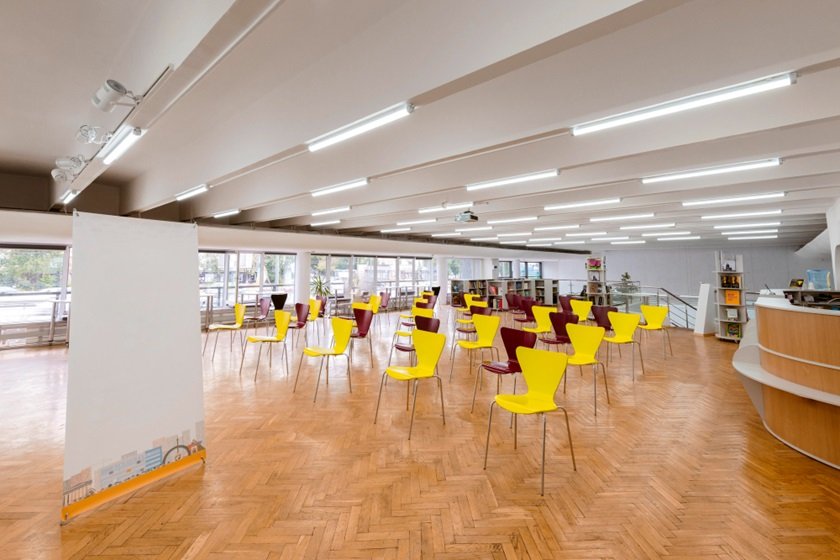

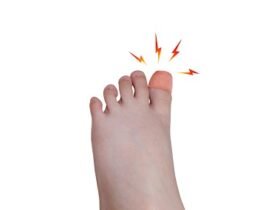
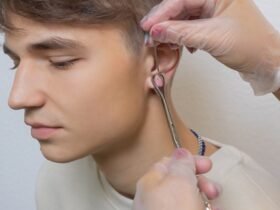

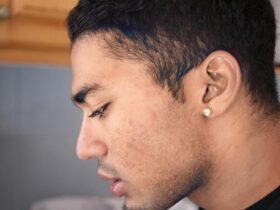
Got a Questions?
Find us on Socials or Contact us and we’ll get back to you as soon as possible.